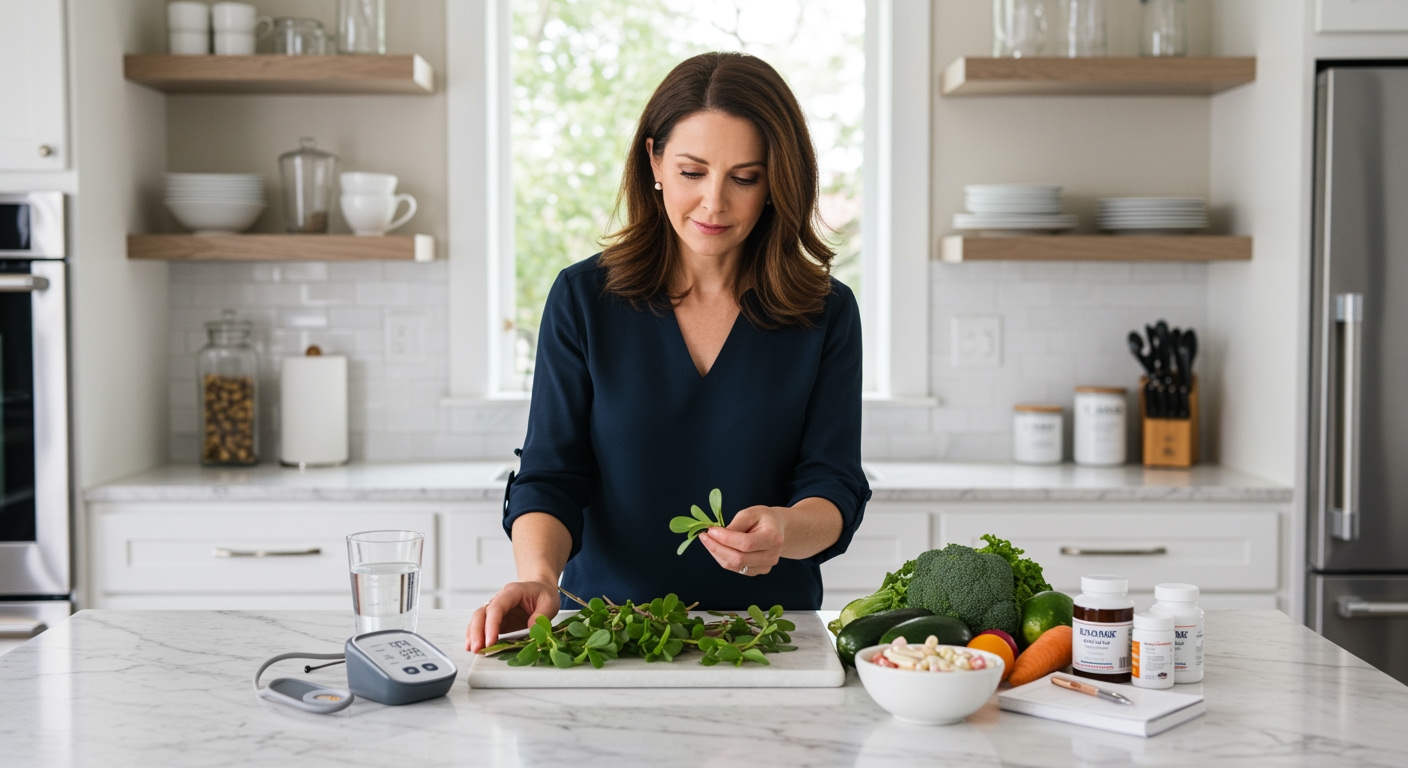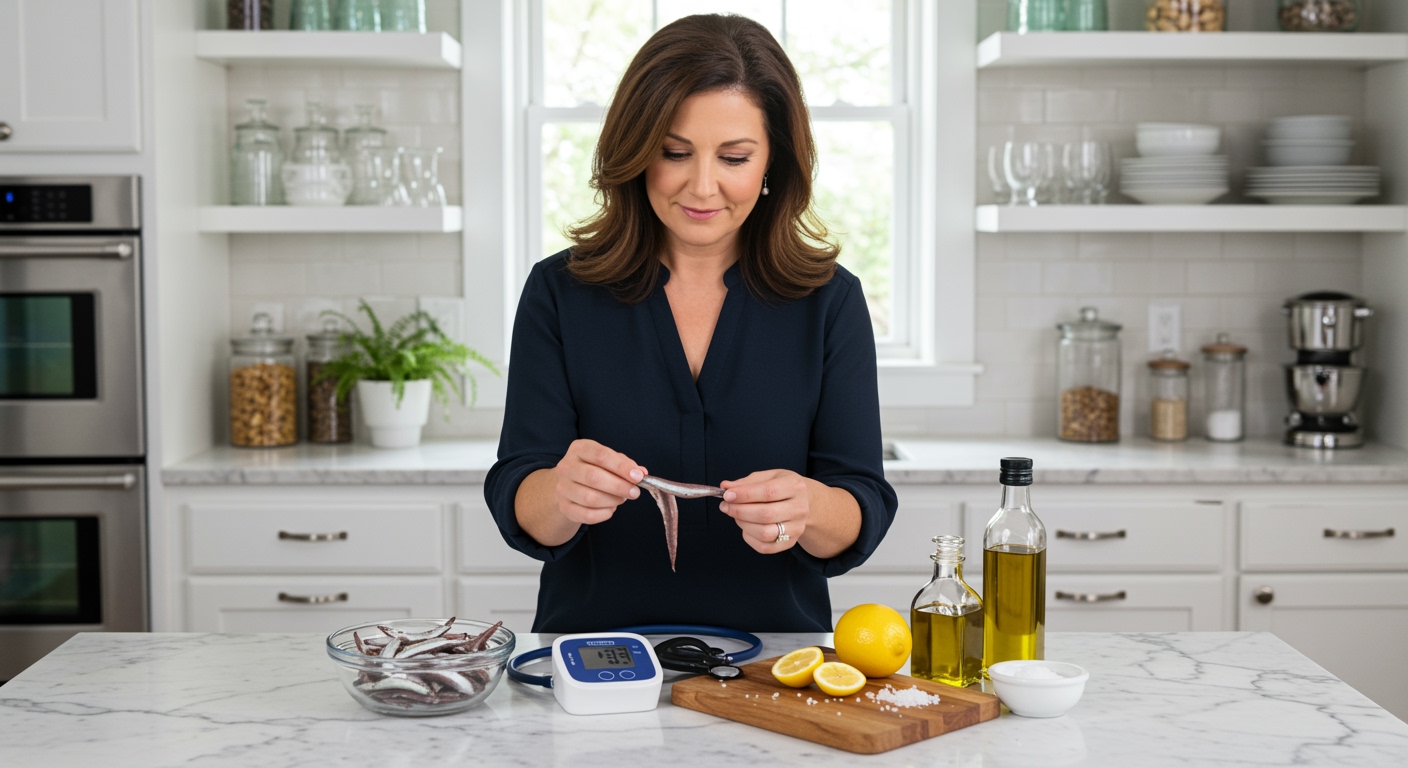✪ Key Takeaway: Purslane may worsen low blood pressure symptoms due to its potassium content and potential diuretic effects.
Introduction
You walk through the farmers market and spot those thick, succulent purslane leaves that everyone calls a superfood.
But if you already struggle with low blood pressure, you might wonder whether this popular green could make your symptoms worse instead of better.
Hi, I’m Abdur, your nutrition coach and today I’m going to explain exactly how purslane affects blood pressure and whether you should avoid it if you have hypotension.
What Makes Purslane Different From Other Leafy Greens?
Purslane stands out because it contains exceptionally high levels of omega-3 fatty acids compared to other vegetables.
This succulent plant also packs significant amounts of potassium, magnesium, and vitamin C into every serving.
The potassium content in purslane reaches about 494 milligrams per 100 grams, which is considerably higher than many common vegetables.
Research shows that purslane contains compounds called betalains and flavonoids that can influence cardiovascular function.
These bioactive compounds work differently in your body compared to nutrients found in spinach or lettuce.
✪ Fact: Purslane contains more omega-3 fatty acids than any other leafy green vegetable studied.
How Does Purslane Affect Your Blood Pressure?
The high potassium content in purslane can cause your blood vessels to relax and widen.
When blood vessels dilate, your blood pressure naturally drops further than it already is.
Purslane also contains compounds that may act as natural diuretics, causing your kidneys to eliminate more water and sodium.
This diuretic effect reduces the total volume of fluid in your bloodstream, which can lower blood pressure even more.
The omega-3 fatty acids in purslane support healthy blood vessel function, but this can mean even more vasodilation for people with hypotension.
Your body responds to these combined effects by potentially dropping your blood pressure to levels that cause dizziness, fatigue, or fainting.
✪ Pro Tip: Monitor your blood pressure readings for several days after eating purslane to track any changes.
What Symptoms Should You Watch For?
If purslane worsens your low blood pressure, you might experience increased dizziness within 2-4 hours after eating it.
Many people notice more fatigue than usual or feel lightheaded when standing up quickly.
Some individuals report feeling unusually weak or having difficulty concentrating after consuming purslane regularly.
You might also notice that your heart rate increases as your body tries to compensate for the lower blood pressure.
Cold hands and feet can become more pronounced because reduced blood pressure affects circulation to your extremities.
These symptoms typically appear gradually over several days of regular purslane consumption rather than immediately after one serving.
✪ Note: Keep a food and symptom diary to identify patterns between purslane consumption and your symptoms.
Should You Completely Avoid Purslane?
You do not need to completely eliminate purslane from your diet if you have mild hypotension.
Start with very small amounts, perhaps just a few leaves mixed into a larger salad with other ingredients.
Eating purslane alongside foods that naturally support blood pressure, like salty olives or cheese, can help balance its effects.
Consider consuming purslane earlier in the day when your blood pressure tends to be naturally higher rather than in the evening.
If you take medications for other conditions, discuss purslane consumption with your healthcare provider first.
The key is finding the right amount that allows you to enjoy purslane’s benefits without worsening your hypotension symptoms.
✪ Pro Tip: Try eating purslane only 2-3 times per week instead of daily to minimize cumulative effects.
The Bottom Line
Purslane can indeed worsen low blood pressure symptoms due to its high potassium content and potential diuretic effects.
Smart eating means understanding how every food affects your unique body chemistry, and purslane is no exception to this rule.
I would love to hear about your experiences with purslane or any questions you have about managing low blood pressure through nutrition in the comments below.
References
At NutritionCrown, we use quality and credible sources to ensure our content is accurate and trustworthy. Below are the sources referenced in creating this article:





